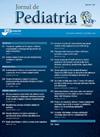Parental predictors of childhood vaccination adherence in border areas of Southern Vietnam: a first look at minority communities
IF 2.5
4区 医学
Q1 PEDIATRICS
引用次数: 0
Abstract
Objectives
Suboptimal timeliness and coverage of childhood vaccination programs undermined their effectiveness in achieving population-level immunity. This issue is particularly concerning among minority populations, where disparities in vaccination adherence persist. To address this gap, the study assessed the extent of parental adherence to age-appropriate childhood vaccination and its predictors among the minority children under five years of age.
Methods
This cross-sectional study was conducted in three districts of Dong Thap Province, Vietnam, and neighboring Cambodia. A total of 449 ethnic minority parents with children under five years old participated. Data were gathered through face-to-face household interviews using a structured questionnaire, complemented by direct observation of the children’s vaccination cards to verify adherence. Binary logistic regression was used to identify predictors of vaccination adherence.
Results
The adherence rate to childhood vaccination among children in the minority population was 18.9 %. Parental adherence was significantly higher for children under one year of age (aOR = 2.54, 95 % CI: 1.29–5.03) and for firstborn children (aOR = 3.48, 95 % CI: 1.36–9.92). Within the Health Belief Model framework, greater perceived barriers were associated with lower adherence (aOR = 0.32, 95 % CI: 0.21–0.49), while higher parental self-efficacy was linked to increased adherence (aOR = 1.84, 95 % CI: 1.11–3.11).
Conclusion
This study revealed a low parental adherence rate (18.9 %) to childhood vaccination. A child’s age, birth order, perceived barriers, and parental self-efficacy influenced adherence. These findings emphasize the need to incorporate these factors into targeted policies and interventions for improving immunization rates in minority populations and comparable settings.
越南南部边境地区儿童疫苗接种依从性的父母预测因素:首先看少数民族社区。
目的:儿童疫苗接种计划的及时性和覆盖率不理想,破坏了其在实现人口水平免疫方面的有效性。这一问题在少数民族人群中尤其令人关切,因为他们在坚持接种疫苗方面仍然存在差异。为了解决这一差距,该研究评估了父母遵守适龄儿童疫苗接种的程度及其在五岁以下少数民族儿童中的预测因素。方法:横断面研究在越南同塔省的三个地区和邻近的柬埔寨进行。共有449名有5岁以下子女的少数民族家长参与了调查。通过使用结构化问卷进行面对面的家庭访谈收集数据,并通过直接观察儿童的疫苗接种卡来验证依从性。二元逻辑回归用于确定疫苗接种依从性的预测因子。结果:少数民族儿童儿童疫苗接种率为18.9 %。1岁以下儿童(aOR = 2.54,95 % CI: 1.29-5.03)和头胎儿童(aOR = 3.48,95 % CI: 1.36-9.92)的父母依从性显著较高。在健康信念模型框架内,更大的感知障碍与更低的依从性相关(aOR = 0.32,95 % CI: 0.21-0.49),而更高的父母自我效能与更高的依从性相关(aOR = 1.84,95 % CI: 1.11-3.11)。结论:本研究显示儿童接种疫苗的家长依从率较低(18.9 %)。儿童年龄、出生顺序、感知障碍和父母自我效能影响依从性。这些发现强调需要将这些因素纳入有针对性的政策和干预措施中,以提高少数群体和类似环境中的免疫接种率。
本文章由计算机程序翻译,如有差异,请以英文原文为准。
求助全文
约1分钟内获得全文
求助全文
来源期刊

Jornal de pediatria
医学-小儿科
CiteScore
5.60
自引率
3.00%
发文量
93
审稿时长
43 days
期刊介绍:
Jornal de Pediatria is a bimonthly publication of the Brazilian Society of Pediatrics (Sociedade Brasileira de Pediatria, SBP). It has been published without interruption since 1934. Jornal de Pediatria publishes original articles and review articles covering various areas in the field of pediatrics. By publishing relevant scientific contributions, Jornal de Pediatria aims at improving the standards of pediatrics and of the healthcare provided for children and adolescents in general, as well to foster debate about health.
 求助内容:
求助内容: 应助结果提醒方式:
应助结果提醒方式:


